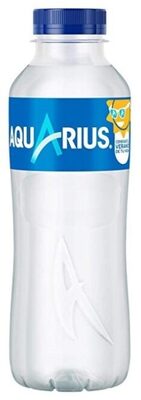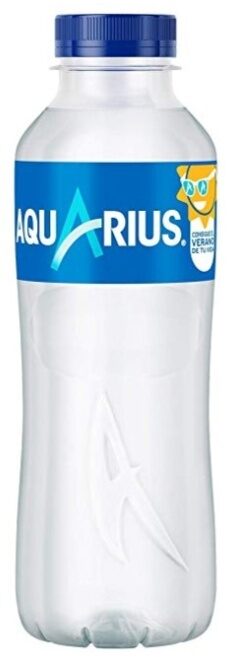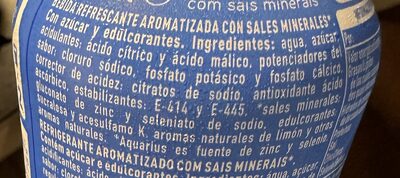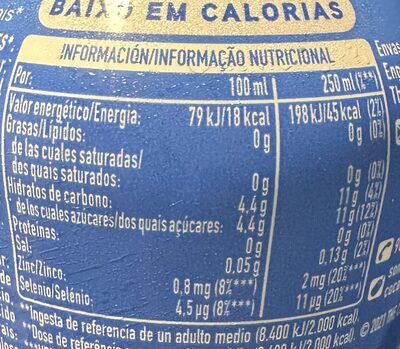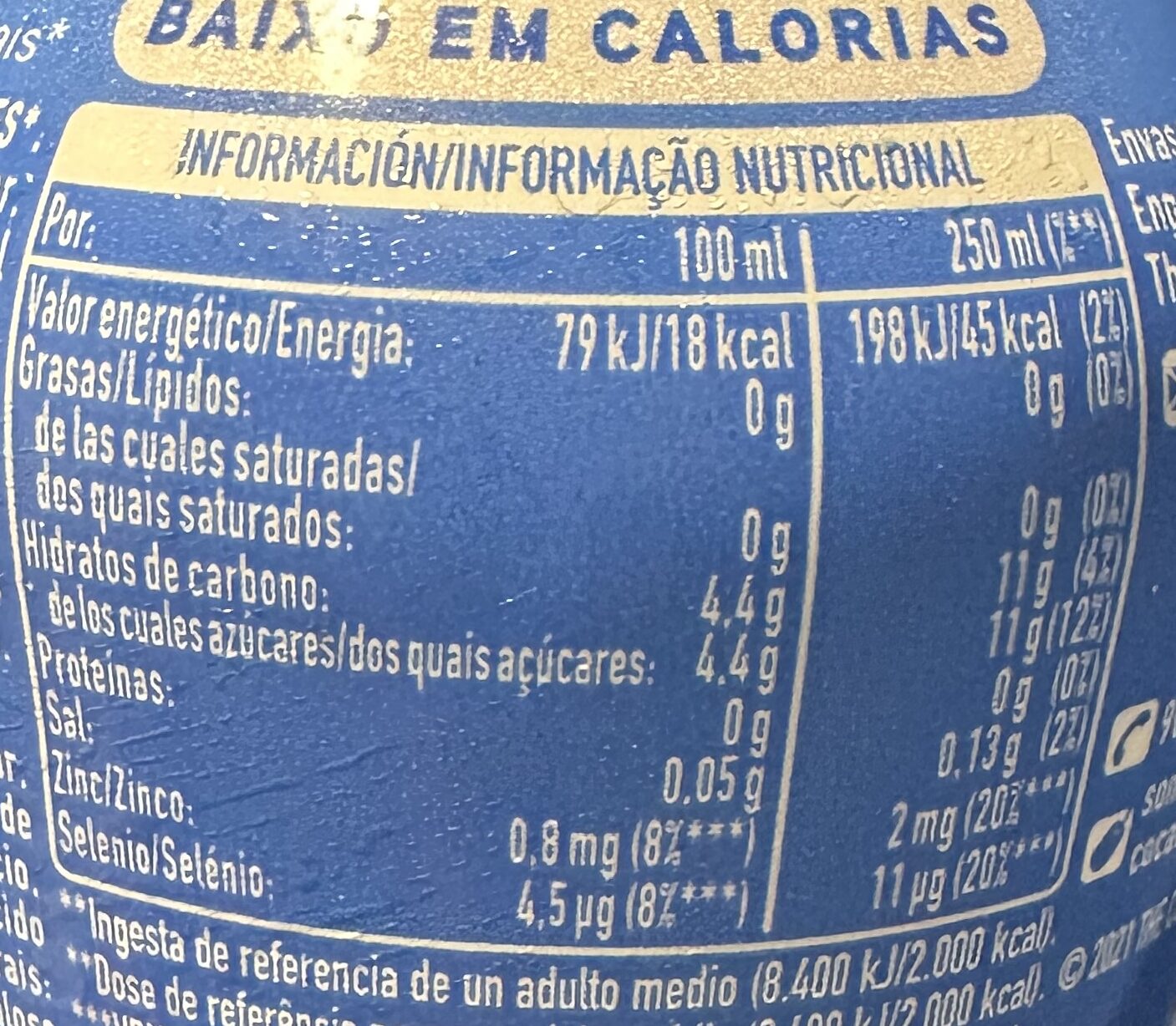Aquarius Limón - 500 ml.
Aquesta pàgina del producte no està completa. Podeu ajudar a completar-la editant-la i afegint-hi més dades a partir de les fotos ja disponibles, o fent-ne més amb l'aplicació de androide o iPhone / iPad. Gràcies!
×
Codi de barres: 50112784
Quantitat: 500 ml.
Empaquetament: Plàstic, en:Bottle
Marques: Aquarius
Categories: Begudes, Begudes carbonatades, Aigua envasada, Begudes ensucrades artificialment, Refrescs, Begudes sense alcohol, en:Energy drinks, en:Flavored waters, Begudes ensucrades
Botigues: Amazon
Matching with your preferences
Entorn
Empaquetament
Transport
Report a problem
Fonts de dades
Producte afegit per openfoodfacts-contributors
Última modificació de la pàgina del producte per redspider.
La pàgina del producte, també editada per acuario, beniben, busybusygirlie, charlesnepote, cocopops2023, ewen, foodless, foodvisor, hubbit200, ingrid2323, kiliweb, magi-mj7, margabar, musarana, oopenfoodfactsvincent, packbot, scanbot, superwoman1969, tacite-mass-editor, teolemon, thaialagata, yuka.R0pvS0lwb1QrS01Cbzh3Kzl4ckYyKzVJbktLTUFFR0lNZEJOSUE9PQ, yuka.VzVnTEg0c29wTmdTcHM4RXh3bjNvdk5XK0llMWVqeXdjZVF5SVE9PQ, yuka.WHFreVNyNGppTkEzbHNZRzdBeUU5dEVveUkyaVJUMkxMT0VqSVE9PQ, yuka.YWYwaU80MDdwL0lGbk1kbHhoU0wvdmRveDVHb0RVR0pPZnNSSVE9PQ, yuka.ZVpJR0hKWXVoYVF4bmZFVjB3TE4wZDVyeUp5Z1lHU1hkc1llSVE9PQ, yuka.sY2b0xO6T85zoF3NwEKvlkEYf8DxnWr9OBjRxG65zdygDb_JcOEp47rZDKs, yuka.sY2b0xO6T85zoF3NwEKvlkEdUsr_pWnIZkLfqX2awPiQPoTHOox8yaTeI6s, yuka.sY2b0xO6T85zoF3NwEKvlkYfDOKGpW__KSbhxWew18ezdMTJZc1Qz42gIqg, yuka.sY2b0xO6T85zoF3NwEKvlkldb9aO_yPfB0XTkGSy9v2RBILpXctOxNChaqo, yuka.sY2b0xO6T85zoF3NwEKvllBmWYb5ryn0Fzbtp2HX5PeydMbBPoxJz4jRAqs, yuka.sY2b0xO6T85zoF3NwEKvllNKC8PXvBPNahHjoGmu5NSsA7vQeOAj4YnzM6s, yuka.sY2b0xO6T85zoF3NwEKvlmUaDNz1rwyZbRXTk13U4-mDKYzWMeh-5bXEHqs, yuka.sY2b0xO6T85zoF3NwEKvlmZ8aIDmkznNDzHig2SqzNeQcrjxbtoss9OnI6g, yuka.sY2b0xO6T85zoF3NwEKvlmd2TvvniWnPNAbkxBKCnOqhDpbDTeFg5Lr1Iqg, yuka.sY2b0xO6T85zoF3NwEKvlmkbSPvErTXfCwXfiVCC94aWCoPPa4xD3o6rHKs, yukafix.
